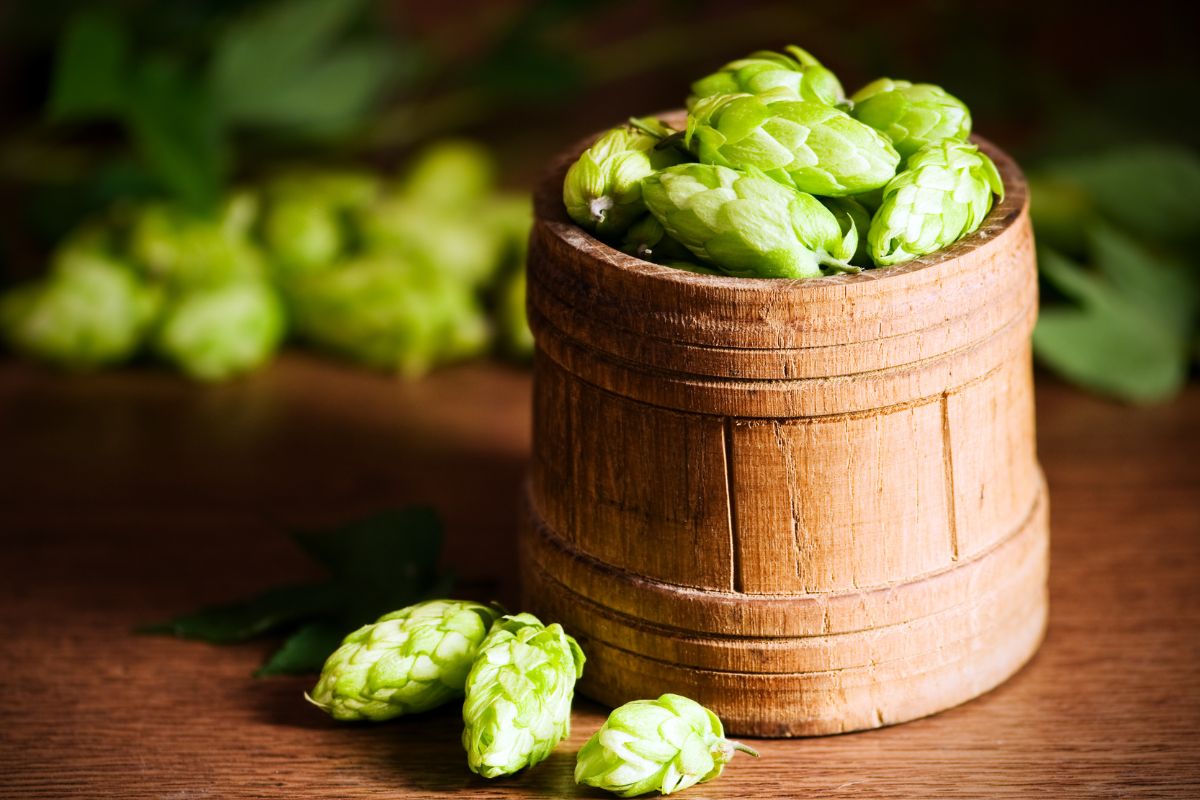We all love a good homebrew, am I right? But what we don’t love is boiling those hops and watching it turn into a big bowl of mushy green gunky stuff. This is why most homebrews have to filter out their hops.
This isn’t the only reason we filter those hops either, it also helps clarify your brew, and saves you a whole lot of hassle when it comes to fermentation.
If you don’t filter those hops you’ll be left with a whole lot of clogs, and sides that are stuck and stinking dirty.
And no one on earth is keen on a long and boring clean-up process.
Plus if you opt to use an external chiller such as a plate chiller, those hops are going to send debris shooting through the pipes. And we don’t want that either.
So what do we do? We filter them out. How do you filter them out? Well, there are loads of different options from mesh strainers to hop stoppers. And luckily for you, we’re going to go through the most popular options in this article.
A Mesh Strainer
Everyone will have a mesh strainer knocking about in one kitchen cupboard or another, which makes this option fairly tempting since you won’t even need to leave the comfort of your own house.
Using it is also very standard and simple. All you’ll need to do is pour your homebrew into the strainer and catch all those pesky hops within the strainer. And boom – all done.
However, I have made that sound a little easier than it actually is.
Firstly, you’ll probably need another helping hand to do it this way as holding the strainer still and pouring the liquid on your own can be a little difficult.
If you’re not straining whole hops, it can get a little more difficult, since the pellets go pretty sludgy and they block the strainer pretty quickly.
So slow and steady is the game here, as you’ll need to keep emptying the gunk out of your strainer.
A Hop Bag
After the strainer method, this is probably next in line for most popular. You probably won’t have one of these just knocking around in the house, so you’ll need to take a trip to the store.
These bags can range in price. The cheaper hop bags tend to be made with muslin while you’ll pay a little extra for a nylon mesh material.

These bags do a wonderful job of filtering out those hops, however, they do tend to decrease your hop utilization which is a drawback.
Some homebrewers tend not to use this method because they feel like they steal the character from their hops.
If you do use these bags, tie the knot, double-check it, and then double-check it a couple more times. Consider yourself warned, because these bags have a tendency to come open during the boil.
Paint Strainer
I was a little bit dubious when I saw the suggestion to use a paint strainer as a hop filter bag at HomebrewTalk, but I’m always up for trying everything at least once.
So that’s what I did. And I can’t really knock it either, the hops could swim free more so than they can with the option above, and yet it still filters them pretty well.
Once you’ve finished your boil, just remove the filter and all the caught filtration inside it, and voila, done!
Chore-Boy Copper Scrubber
If you’re looking for a cheap and cheerful option to filter out those hops then why not try a copper scrubber?
Now, it’s important to note that you’ll need a kettle with a pick-up tube for this option. But just attach one of the scrubbers to the end of the tube and say goodbye to most of the hops.
This is often used alongside the whirlpool method where you stir the wort to collect the hops in the middle of your kettle.
Hop Stopper
If you check out the reviews of the hop stopper, you’ll see it’s been met with high praise. In fact, it probably is one of the most effective methods you can use.
But that efficacy comes at a price, and it’s not exactly a cheap one. You can be looking at over $60 for the product.
But it does suck up every last ounce of wort and is a great filtration option.
Bazooka Screen
If you have a boil kettle then you can use a bazooka screen to filter your hops.
But this would never be my immediate choice, especially if you’re not using whole leaf hops because they are absolutely notorious for clogging up if you use pellets.
Plus since they are slightly elevated they tend to leave behind wort.
False Bottom
A false bottom is a piece of metal equipment that is shaped as a perforated disk. It basically allows the liquid to filter through but traps any solids above it.
Again though, these are really only great to use with whole hops because there can be clogging issues.
Final Thoughts
As you can see, there are plenty of hop filtration methods that you can use. They all have their own sets of advantages and disadvantages, so you may just need to trial and experiment with what works best for you.
Of course, it will all depend on what exactly you’re brewing and the type of hops you have, whether they are whole or pellets.
Personally, though unconventional I really found the paint strainer method to be quite effective, and while expensive the hop stopper also does the job perfectly.
But hopefully, now, you have a better understanding of each method, how to go about it, and what the pros and cons of each method are.
Give some of these tips a whirl and see how effective you find them.
Happy Brewing!

